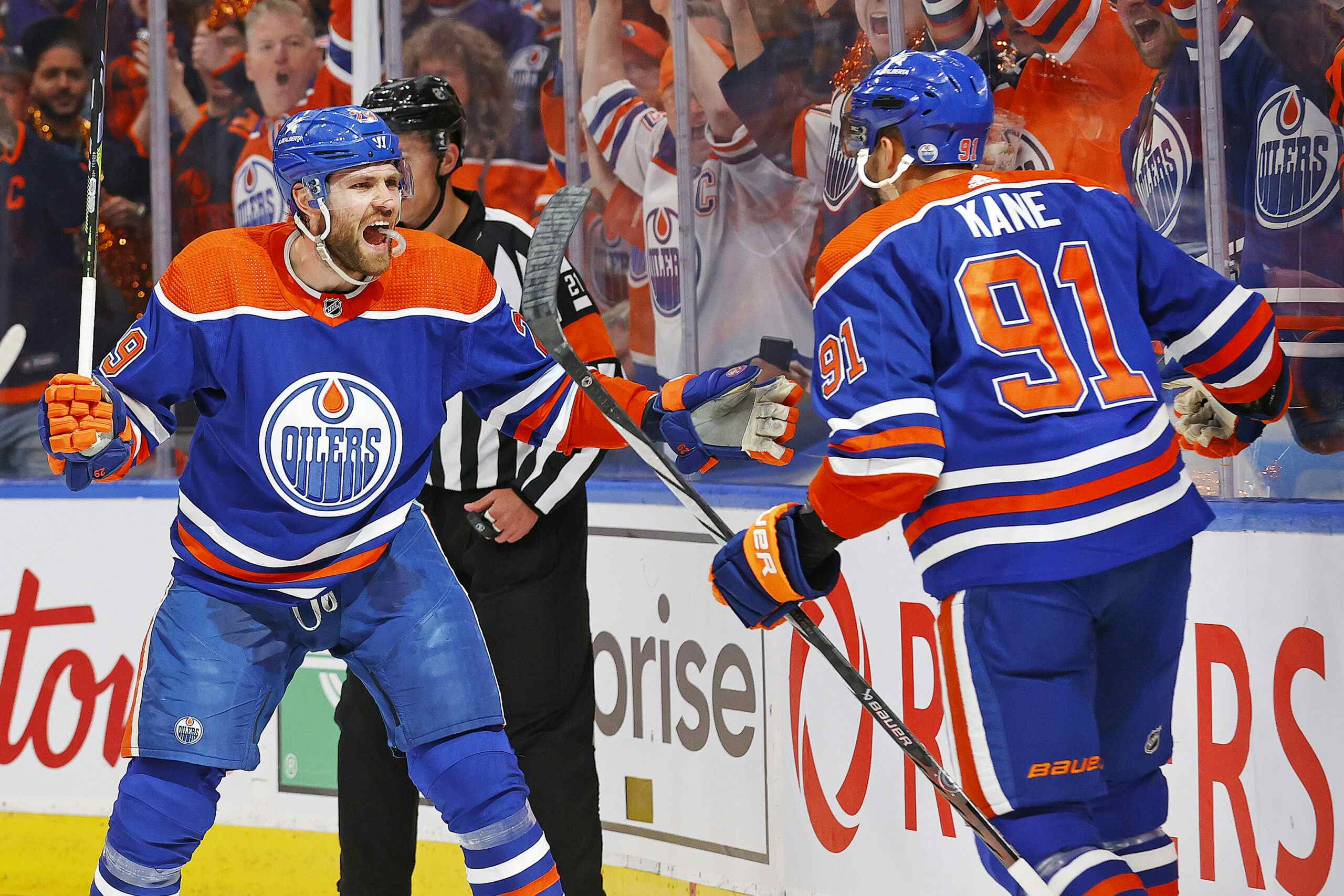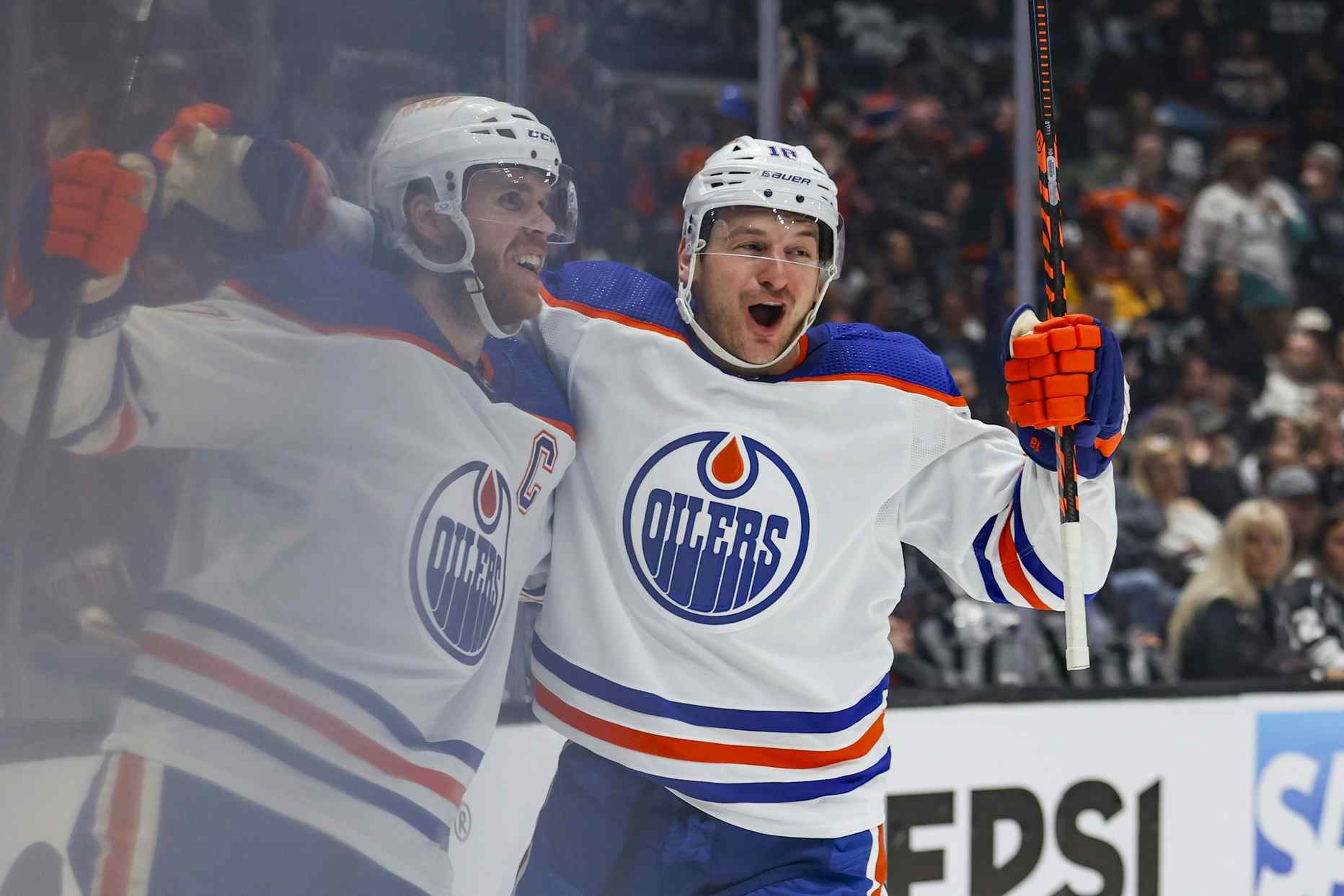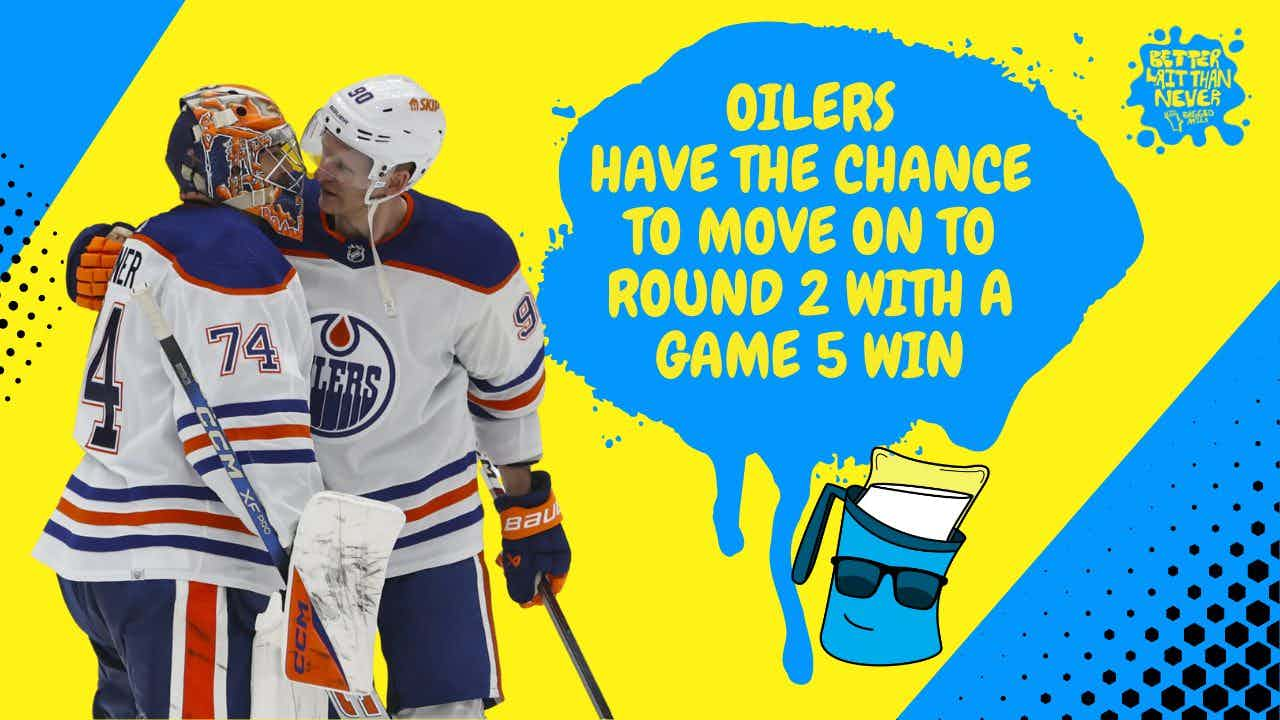Training Camp Battles: Goaltending

For all the attention focused on centre and defence and coaching, no position burned the Edmonton Oilers in 2014-15 like goaltending did. Both of the Oilers’ key goalie gambles faltered badly, and the best puck-stopping the team got came in those days when injuries meant that Richard Bachman and Laurent Brossoit were between the pipes.
A new general manager hasn’t meant a change in fundamental approach. Once again, Edmonton is rolling the dice on goalies that have never held down the No. 1 job, and hoping this time that things work out better. We’ll see if that happens, and it’s likely to be a dominant story one way or the other from the first day of training camp to the last minute of the final game of the season.
It Really Was the Goaltending

Before getting into this year’s candidates, we should probably spend a little bit of time on what happened last season. The collapse of both Scrivens and Fasth, particularly in conjunction with the implosion of Devan Dubnyk the year before, has created an idea that the real issues in Edmonton had more to do with the skaters than they did with the goalies.
To a degree, that’s potentially true. There’s a lot we don’t know about goaltending, and Edmonton’s defence was so bad last year that I’m hard-pressed to believe that there wasn’t a shot quality component to the team’s troubles. But I simply can’t agree with the goalie apologists out there who want to lay this all on the team’s skaters.
War-on-Ice has a metric for – among other things – shot quality. It’s not perfect, but it does help remove some of the guesswork at hockey’s most mysterious position. Last season, 51 goalies appeared in at least 20 NHL games. Fasth ranked 50th of those 51 in terms of save percentage on low quality shots; the only player to come in behind him was Scrivens in 51st place. Just for good measure, Fasth also ranked 51st of those 51 goalies in terms of save percentage on medium-danger shots. Both were consistently bad on low-danger shots, including after Todd Nelson stepped into the head coaching job full-time in late December.
This sort of thing isn’t exactly unprecedented. A decade ago, Tommy Salo gave out for the Oilers after some years of strong play (and for those who want to blame that goal against Belarus, Salo went 10-7-1 with a 0.920 SV% after coming back from the 2002 Olympics). Edmonton decided that his largely untested backup, Ty Conklin, had looked good enough late in 2003-04 to inherit the starting job from him; they traded Salo at the deadline and Conklin took over. The next season, Edmonton hedged its bets by bringing back Jussi Markkanen, an older European goalie who had looked good overseas and over a short NHL career.
It would have been easy enough to hang the whole mess on defence. After all, three goalies with reasonable track records had all had major struggles within a short time of each other. Then Dwayne Roloson came to town and it became apparent that it was the goalies after all.
Scrivens posted a 0.916 save percentage over 21 games in 2013-14 behind the Oilers’ defence. Fasth posted a 0.914 save percentage over seven games at pretty much the same time. And while we’re at it, Ilya Bryzgalov posted a 0.908 save percentage over 20 games with that same team. The defence probably didn’t help much last year, but let’s not blame it for what were some very real problems in net.
The Oilers’ hope is that with four legitimate options for minutes it can find two candidates to fix those problems.
The Contenders

1. Cam Talbot. Talbot enters training camp pretty much unquestioned as the Oilers’ starting goalie. He was acquired at significant (if reasonable) cost in the offseason, and his 0.931 career save percentage over 57 NHL games makes him the best bet that Edmonton has. He’s still a gamble, though, and might become vulnerable if he has a slow start to the year. He has a great opportunity here, but he needs to deliver quality starts right out of the gate.
There really isn’t much else to say about the guy who might be the single most critical figure in determining whether 2015-16 is a success for the Oilers or not. He’s a good bet; he’ll either work out or he won’t, and there’s nothing much to be done now but wait and see what happens.

2. Ben Scrivens. I wonder how much the end of 2014-15 weighs on the minds of Edmonton’s managers. Laurent Brossoit had his 49-save game against San Jose, Richard Bachman won three straight while allowing a total of three goals, and Scrivens got lit up for 20 goals in four April losses. It was the worst moment in the worst season of his career.
But a rebound from his 0.890 SV% performance really isn’t out of the question. Nikolai Khabibulin came back from a 0.890 SV% season with the Oilers in 2010-11 and was pretty good for each of the next two years. Devan Dubnyk got Hart Trophy votes the year after his 0.891 SV% performance in 2013-14. We can add Brian Elliott, Steve Mason, Craig Anderson, Sergei Bobrovsky, Ilya Bryzgalov to the list of goalies who had single seasons like the one Scrivens just had; four of those five guys are still starters and the other played No. 1 minutes after his lousy campaign.
The bulk of Scrivens’ hockey career says he’s at least a decent backup. Last season says he’s garbage. And right now it’s possible to project him anywhere from starting in Edmonton to backing up in Bakersfield by January.

3. Anders Nilsson. He’s 6’5”, he’s coming off a great season in Russia, and he’s only 25 years old. His career numbers in the NHL and AHL aren’t particularly good, but he wouldn’t be the first goalie to struggle in his first crack at a job in North America and subsequently do better the second time around. Just ask Karri Ramo.
Nilsson is a real threat to Scrivens in the No. 2 job, particularly since he is currently on a one-way NHL contract. At this point, I wouldn’t be at all surprised if it’s basically an open contest in training camp, with the goalie who performs best over a couple of games walking away with the backup job.

4. Laurent Brossoit. Brossoit had a great year. Not only was he brilliant in his lone NHL game, but he ran with the starting job in the AHL, playing 53 games and posting a 0.918 save percentage. If the Oilers run into the same situation they had last year, he could very well find himself in the majors for an extended run. He’s extremely unlikely to make the team out of camp, though, what with three one-way NHL contracts ahead of him. That being said, he may end up starting the lion’s share of games in the minors even if Scrivens or Nilsson joins him in California.
5. Eetu Laurikainen. Tyler Bunz played an NHL game last year, so anything is possible. Laurikainen comes to the Oilers after a 0.933 save percentage performance in Finland’s top league. He’s probably ticketed for lots of starts in the ECHL and spot duty in the AHL.
Year Over Year

A year ago, the Oilers came out of training camp precisely the way they went into it. Scrivens and Fasth were 1A and 1B respectively on the depth chart, Bachman was ticketed for the starting role in the AHL with Brossoit as his understudy. Tyler Bunz and Frans Tuohimaa rounded out the cast, with Bunz remarkably finding his way into the NHL for a game.
This year, Talbot seems unassailable as the team’s No. 1 out of the gate, regardless of what happens in camp (though that may change as the year progresses). The real battle is for the No. 2 role; my guess is that Scrivens wins the job in camp but it wouldn’t be a surprise if Nilsson did either. The loser will split time in the AHL with Brossoit, provided he clears waivers. Laurikainen is likely to be an afterthought, but he looks much more like a real prospect than Bunz or Tuohimaa did, and may enter the conversation as the year progresses.
RECENTLY BY JONATHAN WILLIS
Recent articles from Jonathan Willis





